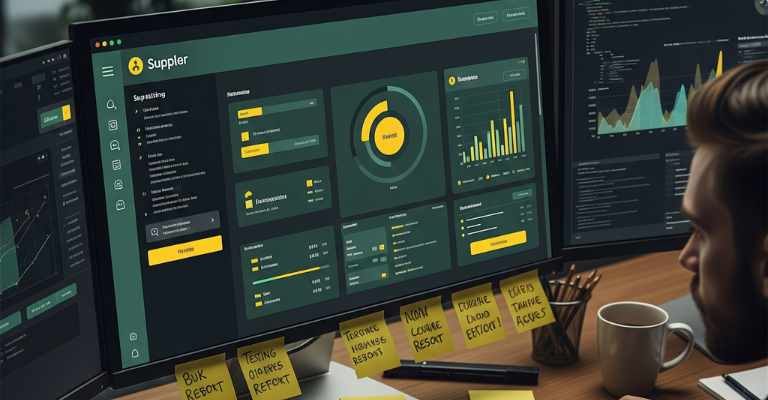
The App That Works on Your Phone, But Not Your Tablet? That’s Why This Blog Exists.
In 2025, users jump from iPhone to Android, from desktop to foldable screens — all while expecting the same flawless experience.
But here’s the problem: software is getting more complex. And bugs are getting sneakier.
If your app crashes during a payment flow, or your AI chatbot goes off-script, you’re not just losing users — you’re losing revenue and trust.
This is why software testing isn’t just a checkbox anymore. It’s a full-blown survival strategy.
Let’s break down the real reasons companies are doubling down on QA:
It’s not just “click > submit > done” anymore.
Today’s apps have:
In-app purchases
Personalized content
Live chat
Multi-language support
AI-driven UX
All these features = more edge cases. And edge cases = more ways things can break.
If you’re not testing every path, you’re gambling with UX.
AI isn’t rule-based. It learns. It evolves.
Which means:
Your recommendation engine might suggest the wrong product
Your AI bot could misinterpret a simple query
Your ML model could introduce bias
These aren’t traditional bugs. They’re behavior flaws — and they need specialized testing strategies.
One app, 30+ testing environments:
iOS, Android, Windows, Mac
Foldables, tablets, smart TVs
Voice assistants, wearables
Your app needs to look and function properly on all of them. If not, users bounce fast.
2025 isn’t friendly to companies that mess up user privacy or accessibility.
You need to test for:
GDPR / CCPA compliance
WCAG (Web Content Accessibility Guidelines)
Industry-specific rules (finance, healthcare, etc.)
Skipping this isn’t just risky — it’s illegal.
The cost of a broken release?
Angry users
1-star reviews
Lost contracts
News headlines (yes, it happens)
Testing ensures that doesn’t happen. And if you’re running frequent updates (which you should be), you need continuous QA to catch what CI/CD might miss.
Don’t just test “if it works.” Test how well it works — across use cases.
Automated Testing – Fast, repeatable checks for core functionality.
Manual Exploratory Testing – Real humans finding real-world issues.
Security Testing – Identify vulnerabilities before hackers do.
Performance Testing – Can your app handle a surge? Or crash like Twitter on launch day?
Accessibility Testing – Because inclusive design = better UX for everyone.
AI Behavior Testing – Unique to apps that use generative AI, chatbots, or machine learning systems.
Think about the last time an app crashed or a website malfunctioned. It was likely frustrating, but for businesses, the consequences of software failure in 2025 can be far more severe than just annoyance. Financial losses, reputational damage, security breaches, and legal penalties are all potential outcomes of inadequate software testing.
The digital world is becoming more interconnected and reliant on software. This means that even small flaws can have a ripple effect, impacting more users and causing greater disruption. Proactive and comprehensive software testing is the best way to mitigate these risks.
Given these increasing complexities and risks, investing in thorough software testing is not just a cost—it’s a crucial investment in the success and sustainability of your software products in 2025 and beyond. This includes:
Adopting Modern Testing Methodologies: Utilizing agile testing, test automation, and continuous integration/continuous delivery (CI/CD) pipelines to ensure faster feedback and higher quality.
Investing in Skilled Testers: Modern testers must continuously upskill. This means hiring professionals who understand test automation, various tools, and the ability to test complex systems, AI, and multi-platform environments.
Integrating Testing Early in the Development Cycle: Shifting testing left to identify and fix issues earlier when they are less costly and time-consuming to resolve.
Utilizing the Right Testing Tools: Leveraging advanced testing tools and frameworks to automate tests, manage test data, and gain better insights into software quality.
If your dev cycle doesn’t include testing, it’s not ready for 2025.
Apps today aren’t just used — they’re judged. One glitch, one broken flow, or a poorly tested AI feature can kill trust instantly.
Testing isn’t a delay. It’s a quality multiplier.
In 2025, the apps that win will be the ones that just work — everywhere, every time. Investing in solid testing isn’t about perfection. It’s about meeting rising user expectations, staying compliant, and building software people can count on.
Want help from pros who get this?